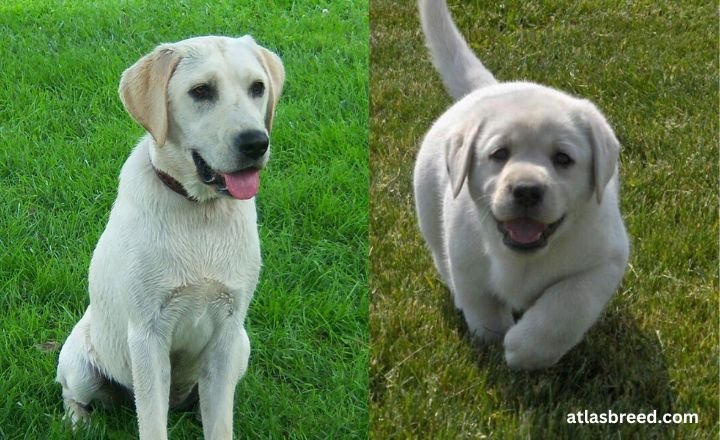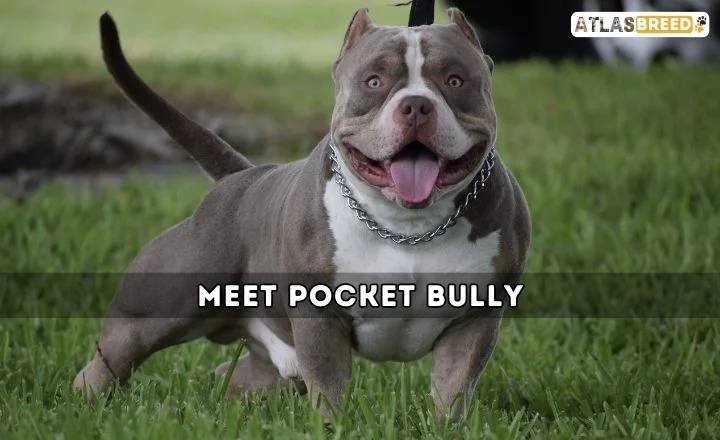There is one breed of dog that wins people over on all continents, and that is the miniature Labrador Retriever. Canine partners come in all different forms and sizes. This endearing dog has earned a spot as a classic family dog and an essential working companion.
It is a miniature version of one of the most popular breeds worldwide. These incredibly cute mini lab exemplify the intelligence and kind nature that have made Labradors a mainstay in family households for many decades.
What Is A Miniature Labrador?
Combining a Labrador Retriever with a smaller breed usually a Poodle or another Labrador Retriever results in a miniature Labrador. That is often called a “Labradoodle” or “Miniature Labradoodle.” Smaller-framed companions in the Labrador breed are the aim of these dogs’ breeding programs.
They have the characteristic strong, well-proportioned body, thick coat, and amiable face of a Labrador. They are smaller in stature and their responsible breeding is important as they can have some of the same problems as regular Labradors, such as allergies, certain eye diseases, hip/elbow dysplasia, etc.
The Miniature Labrador Retriever just like the Pocket Bully are smaller variations of larger dog breeds that retain their essential characteristics in a more condensed form. They provide the same breed characteristics in a more manageable size.
Small Size to Dwarfism
There is just one breed of labrador, and within the healthy average population, that breed has defined size parameters.
Small Sized Breed
These Labrador Retrievers are uncommonly little and probably the consequence of selective breeding for extreme smallness. They are not an official breed and their small stature might cause health problems and kennel groups do not recognize them.
Dwarf Labrador
Genetic dwarfism is a recognized disorder in dogs just like it is in humans. The lack of growth hormone is what distinguishes this endocrine disorder. Like the growth hormone, there may be additional hormone deficiencies in pups like these.
This is a congenital condition if both of the parents are Labradors, the puppies will inherit it. Thus you will receive pups with the same gene if you breed two Labs that carry the dwarfism gene.
There are two types of dwarf Labradors nowadays because of this medical disease which is caused by two separate genes (the SD1 Gene and the SD2 Gene). Osteochondrodysplasia which affects lab animals is represented by the first gene. A puppy with this disease will have bowed legs, swollen joints, and malformed paws.

Skeletal dysplasia is the genetic mutation represented by the second one. This pathological condition arises from the pituitary gland’s uneven production of growth hormone in the pup, which stunts the canine’s growth.
Is There Such A Thing As A Miniature Labrador?
That would be a simple “yes.” A pocket lab is present. This pup is not even close to the size of a typical Lab. However, none of the major kennel clubs have officially recognized this dog breed.
The adorable dog known as a mini Labrador is not one of the teacup puppies the American Kennel Club (AKC) recognizes for its lovely appearance.
Mini Lab Dog As A Result Of Crossbreeding
These days with the Internet and current technology, there is a greater chance that you may find a miniature Labrador breeder very easily. A dog that resembles a Lab but is smaller in stature is produced when breeders crossbreed Labs with various smaller dog breeds.
There are many different Labrador mini mixes available and many of them make amazing puppies. Only skilled and qualified dog breeders should engage in the complex process of crossbreeding.
Breeding Runt Dogs
Breeding runts is the process of mating the smallest puppy in a litter with another puppy that is also very little. The two pups from the same litter are inbred the only requirement is that both dogs be smaller than the others.
Runt breeding is not considered morally right. These dogs usually have more serious health issues. It’s also important to clarify that just because two little dogs are bred, it doesn’t mean the entire litter of puppies will be small.
What is the difference between a Lab and a Mini Lab
The key difference between a regular Labrador Retriever and a “mini lab” (or Miniature Labrador) is their size, along with these differences:
Appearance: Labradors have a distinct, stocky build with a thick double coat. Mini lab Dog can have a more varied appearance, inheriting traits from both parent breeds, like a curlier, poodle-like coat.

Temperament: Both Labradors and mini labs are known for being friendly, intelligent, and energetic. The temperament of mini-labs is influenced by both the Labrador and the smaller breed they are mixed with.
Mini Labrador
The Mini Labrador, often referred to as a Miniature Labrador, is a smaller version of the beloved Labrador Retriever. While not a recognized breed, these dogs typically result from breeding smaller Labs or mixing with smaller breeds. They retain the friendly and affectionate nature of their larger counterparts, making them excellent family pets.
Mini Labradors usually weigh between 30 to 50 pounds and stand about 12 to 18 inches tall. They enjoy playful activities and require regular exercise. Their coats are short and easy to maintain, coming in classic colors like black, yellow, and chocolate. Ideal for smaller living spaces, they bring joy to any home
Mini Lab: Basic Traits
Here are the basic traits and characteristics of a Mini Lab Dog (also known as a Miniature Labrador):
Characteristics
The Labrador breed is the top choice for many dog lovers. Compared to the standard Labrador, the diminutive Lab is smaller. They have quite similar characteristics, though. Like the regular form, the tiny version is also kind, amiable, and affectionate.
Size: Typically 15-20 inches tall at the shoulder.
Weight range of 20-50 lbs, significantly smaller than standard Labradors.
Appearance: Compact, smaller build compared to full-size Labradors.
Can have a variety of coat types, from straight and smooth to curly and poodle-like.
Coat colors may include mini black lab, yellow, or chocolate, like standard Labradors.
Temperament: Inherits the friendly, loyal, and energetic personality of Labrador Retrievers.
Temperament can be influenced by the other parent breed (often a Poodle).
Usually active, intelligent, and eager to please.
Energy Level: Moderately high energy, requiring regular exercise and mental stimulation.
May be slightly less active than full-size Labradors due to their smaller size.
How does the Mini Lab look?
Their most distinguishing feature is their smaller legs than a standard lab. The Mini Lab’s appearance is a cross between a Labrador and a smaller breed, most frequently a Poodle.
Compared to the traditional Labrador Retriever this produces a more compact. The precise physical attributes can differ greatly throughout Mini Labs.

What Is The Weight Of A Mini Lab?
The weight and stature of male and female labs differ slightly. Full-sized adult males weigh between 65 and 80 pounds, while the average weight of girls increases from 55 to 70 pounds, based on the growth chart.
The weight of a mini labrador retriever ranges from 35 to 50 pounds, and they are notably lighter. The difference in weight can be observed as early as two or three months of age; a small Labrador weighs 16 to 22 pounds, whereas an average Labrador will weigh 20 to 25 pounds.
The Height Of A Miniature Lab
A mini labrador retriever is a huge dog according to various viewpoints. This dog is perceived as medium-sized by others. An average male Labrador is between 22 and 24 inches tall. Their female counterparts often stand between 21 and 23 inches tall.
Miniature dogs are significantly smaller than their typical-sized counterparts. However, there isn’t much of a difference in height between the standard Lab and the little breed of dog. Compared to regular-sized dogs Mini Labs are only two or three inches shorter.
Common Health Issues With The Mini Lab
Most of a small Labrador’s legs will be short. It has also come to our attention that this puppy may have a host of other health issues.
The following are some of the most common health issues these puppies face:
- Obesity
- Respiratory problems
- Hip dysplasia
- Cancer
- Blindness
- Intervertebral disc disease
The Lifespan Of A Miniature Labrador Retriever
An average Labrador Retriever’s lifespan is estimated to be between ten and twelve years. Unfortunately, the lifespan of this cherished canine is significantly shorter in miniature. A portion of these puppies only survive for five or six years.
For this reason, you must review the health records of the puppy’s parents. Miniature puppies typically have shorter lifespans due to genetic abnormalities.
Certain small Labradors may live as long as other Labs provided the dwarfism gene does not significantly harm their health. Therefore, owning one of these tiny puppies does not imply that you will only spend a short time with them.
Pros And Cons Of The Teacup Lab
| Pros | Cons |
| Compact size: Teacup Labs are small enough to be more manageable in homes with limited space, such as apartments. | Health issues: Breeding for an unnaturally small size can lead to serious health problems, such as respiratory difficulties |
| Adorable appearance: The extremely small size of teacup Labs can be perceived as very cute and appealing. | Shorter lifespan: Teacup Labs often have a significantly reduced lifespan compared to standard-sized Labradors. |
| Companionship: Smaller dogs can sometimes be more portable and better suited as lap dogs or for close companionship. | Behavioral concerns: The small size may make teacup Labs more fragile and prone to behavioral issues if not properly socialized and trained. |
Conclusion:
The breeding of these dogs has given rise to several controversies. These puppies are not recognized by the government, as you are aware. These pets are linked to numerous health issues. There is nothing but doubt about the methods used by certain breeders to produce these little replicas of dogs.
It is riskier to get a Mini Lab puppy than a standard Lab puppy or a Golden Retriever dog. Conversely, mini labrador are equally devoted to their family, amiable, and worshipful as regular Labradors.
FAQs
What is a Miniature Labrador Retriever?
A Miniature Labrador Retriever is a smaller version of the traditional Labrador, typically weighing between 25-50 pounds and standing about 14-18 inches tall at the shoulder.
Are Mini Labs hypoallergenic?
No, Mini Labs are not hypoallergenic. They shed fur and produce dander, which may trigger allergies in sensitive individuals.
How do I train a Miniature Labrador?
Training a Mini Lab involves positive reinforcement techniques such as treats and praise. Consistency and patience are key to success.
What is the lifespan of a Miniature Labrador?
The average lifespan of a Miniature Labrador is around 10 to 15 years, depending on genetics and overall health care.






